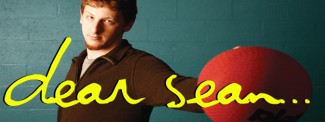Here's a message from one of our friends down under about how they play fours square on the opposite end of the earth. Enjoy!
Hi guys,
In Australia there are a few common rules that seem to differ from those you posted here. I am a primary school teacher who grew up playing this wonderful game and has seen it played at many schools around Australia You are correct, we often play with a standard tennis ball, but also (becoming more popular) with a slightly smaller rubber ball (boy that that thing fly!) Here are the differences that I can see between your rules and ours and you may like to include them as alternate or "Upside down" rules because they come from down under!
In our rules, King, Queen, Jack and Dunce (1, 2, 3 and 4) are arranged in a clockwise ascending order. This means that the person in the lowest square is not an obvious target for skimmers (or swipes as they can be called) from the King. Squares are usually drawn on concrete or bitumen and in the summer sun reach temperatures of 140 degrees Fahrenheit. This adds an element of danger to the game that we quite enjoy.
King serves the ball by throwing it into THEIR square first and then it must bounce above knee height into an opponent's square. A player may receive the ball before it bounces into their square (on the full) or after it bounces in their square. Each player must hit the ball with their hand into their own square regardless of whether it has already bounced in their square or not. The ball must then land within the boundaries of the outer lines or, another player can choose to play it on the full. In this way, a player has to make a choice whether to leave the ball or play it on the full. This is the major difference I believe. Each player MUST hit the ball into their own square first.
If a player hits the ball into an opponent's square without it touching their own square, that is called a "Lob" or a "Mixture". If the receiving player catches the ball, the offending player is eliminated. If the receiving player plays the mixture as normal, then they are eliminated. This does not cascade to each player who continues the rally. Once a mixture has been caught or played the game stops and the last offending player is eliminated.
Other faults that would cause elimination include:
Playing an opponent's ball: If a player hits a ball AFTER it has bounced in a receiving opponents square, they are out. If they hit it BEFORE it has landed, there is no fault and the play continues. Double Bounce: If the ball bounces twice in a square without a hand hitting the ball the player in that square is eliminated. This can occur as a player receives the ball (the ball has beaten them) or after they play it (their play does not carry to an opponents square) As with your rules; grabbing, holding or dragging the ball through the air is not permitted. A solid hit is the only way to play the ball. A player that hits the ball so it rolls is eliminated.
Unlike your rules, if a ball hits a line, play continues unless there is a call or a contest of which square it is in. When contested, the play stops and the person in Queen bounces the ball at the point at which all squares meet so that it bounces back towards them. They must play this ball as normal before it bounces again and the game continues. In may cases, unless there is a dispute, many students simply keep playing as a call of "lines" usually advantages the Queen. Kings will rarely call lines as they have nothing to gain.
Any interference from outside forces results in the Jack serving the ball in the same manner as King would. Disputes that cannot be solved by other means are replayed by the Jack serving as normal.
A "skimmer" or "swipe" refers to when the player allow the ball to drop very close the ground and plays it at the last second before it lands. Hitting it almost parallel to the ground the ball bounces once in their own square and rises only 3-4 inches off the ground before landing again in an opponent's square. Skimmers or Swipes are the second hardest technique in the game. Skimmers are legal as long as the bounces are discernible and the play follows all other rules. A ball that rolls instead of skimming is bad and results in the offending player being eliminated. Successful skimmers are very hard to defend and, if executed well, almost always results in eliminating the recipient. If defended successfully, it usually results in another swipe back the way it came and rallies of skimmers are exciting for all to watch. Skimmers are most successful on diagonally opposing squares as the speed of the hit causes the ball to carry a longer distance. Defending a skimmer successfully is the hardest part of Australian Foursquare.
As with your rules there are MANY variants played around the schools and within each school, but these above rules are common wherever I have been teaching.
I love this game and hope that you guys find our rules an interesting read. Have a go at Aussie Foursquare sometime. I hope you like it.
Thanks, Jarrad Blackburn

